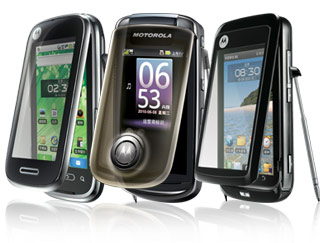
Remember the Motorola Android we saw a while back featuring a transparent flip cover that we weren’t quite sure what the purpose of was? Looks like we have a definitive answer with the announcement of three new Android phones from the Ming line by Motorola. The A1680, MT810, and XT806 will land on China Unicom, China Mobile, and China Telecom respectively, with each getting a unique rundown of features.
The MT810 runs the OPhone OS 2.0 Android skin, and features both resistive and capacitive touchscreens. You may be wondering how, and that is where the transparent flip featured on all three phones comes into play. When open the screen will be stylus friendly 3.2-inch standard resistive, but close the flip and you now have a capacitive surface with which to interact with the phone. On the A1680 and XT806 the transparent flip is merely a cosmetic implementation.
Of those phones, the XT806 offers dual-mode CDMA EVDO and GSM for world roaming, 3.2-inch display at a 300dpi resolution, and 720p video capture. The A1680 sports a 3.1-inch AMOLED display, 5MP camera, and the SoftStylus handwriting recognition system. No word on pricing in the full release, which can be found below.
Motorola Mobility Brings Android™ to its Iconic MING™ Line with Three New Smartphones for China
Android™ power and China-specific features create intuitive, intelligent phones to help you succeed in work and life
August 30, 2010Beijing, August 30, 2010 – Motorola, Inc., (NYSE: MOT) today launched three new Android™ smartphones in its successful and iconic MING™ series designed especially for China. The phones combine a superior Android touchscreen experience with updated MING styling and features, and include the MT810 for China Mobile’s TD-SCDMA network, the XT806 for China Telecom’s CDMA-2000 network, and the A1680 for China Unicom’s WCDMA network. Today’s launch extends Motorola’s leading portfolio of Android devices in the world’s largest mobile telecommunications market and reflects the Company’s commitment to designing phones especially to meet the needs of Chinese users.
“The new MING smartphones reflect our focus on intuitive intelligence, and are designed to adapt themselves to you and your life,” said Mr. Frank Meng, Corporate Vice President and President, Greater China, Motorola Mobility. “With MING we’ve combined our engineering expertise with a deep understanding of how people in China use their devices to create powerful, user-friendly smartphones that ‘feel just right’ and will bring great mobile experiences to our customers here.”
The three new MING smartphones bring Motorola’s portfolio of Android™ devices in China to a market-leading eleven, all released in less than a year. More than half the Android smartphones sold in China in the first half of 2010 were Motorola devices.
Designed in China for Chinese people and first launched in 2006, the MING rapidly established itself as a hit with its distinctive design and special features such as superb Chinese handwriting support, developed by Motorola and now in its sixth generation, and PDA functions that were useful and intuitive long before smartphones were a household word. Since the launch of the series more than five million Ming devices have sold in China.
“With MING and Android we’re bringing together two great Motorola success stories in China,” said Mr. Bin SHEN, Vice President and General Manager, Asia Product Management, Motorola Mobility. “MING has been a hit in China because it was designed especially for the way Chinese people live, work, and play with their handsets. Android™ has been a hit globally and in China thanks to its power and ease of use. By combining MING and Android, we’ve given Chinese professionals three great, new mobile devices for building their success designed exclusively for them.”
All three of the new MING devices offer a full touchscreen experience and sport an updated version of the MING flip design, including the signature transparent flip cover.
MT810: Social Meets Business for China Mobile
MT810 is being jointly launched with China Mobile, the world’s largest mobile telephone operator by subscribers, and uses China Mobile’s OPhone OS 2.0™ implementation of Android. The MT810 has a unique dual-touch system in which the 3.2-inch display is a resistive touchscreen perfect for stylus or finger input and the transparent cover is a second capacitive touchscreen that offers full finger touch functionality even when the phone is closed. A suite of pre-loaded intelligent business applications enables you to stay successful on the go while D1 (720 x 480) video capture, 720p HD video playback and powerful audio-video functionality, including support for China’s CMMB mobile television format, offer an unparalleled mobile entertainment experience. Access China Mobile’s Mobile Market with more than 7000 applications and tens of thousands of themes.
XT806: An Internet Powerhouse for China Telecom
XT806 is an Internet-connected powerhouse built on Android 2.1 and offered by Motorola and China Telecom. Easy connectivity and dual-mode/dual-standby support for CDMA EVDO and GSM enable seamless roaming so you can receive information around the world. XT806 also provides integrated mobile business application tools such as Quicknotes™, and innovative application that allows you to easily work on text, voice recording, videos, pictures, sketches and screen snapshots. With these features, the XT806 becomes a multimedia notebook that can help you search and work at any critical moment. It also has a transparent flip design and a 3.2-inch screen with a super-sharp 300dpi display, powerful GPS navigation services and 720p HD video capture and playback. Access Motorola’s SHOP4APPS, with over 800 specially selected applications.
A1680: Iconic MING Redefined for China Unicom
A1680 brings Android together with a design that reflects the classic and elegant MING heritage. A 3.1-inch AMOLED touchscreen offers a crystal clear display and excellent touch capabilities. A1680 supports China Unicom’s WCDMA network, as well as WAPI and WIFI1 high-speed connectivity for easy access to the mobile Internet. Motorola’s acclaimed intelligent handwriting recognition software has been perfected for the A1680 while a sixth-generation SoftStylus™ handwriting system easily captures your personal penmanship style. The A1680 also has a 5MP camera and GPS navigation services. Access Motorola’s SHOP4APPS, with over 800 specially selected applications.


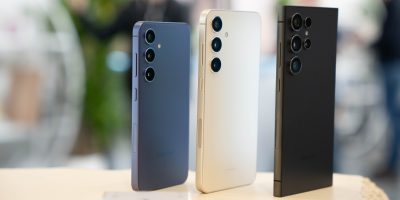
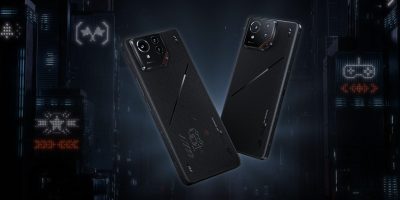
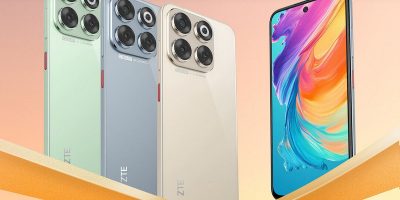
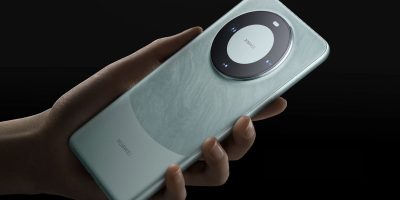

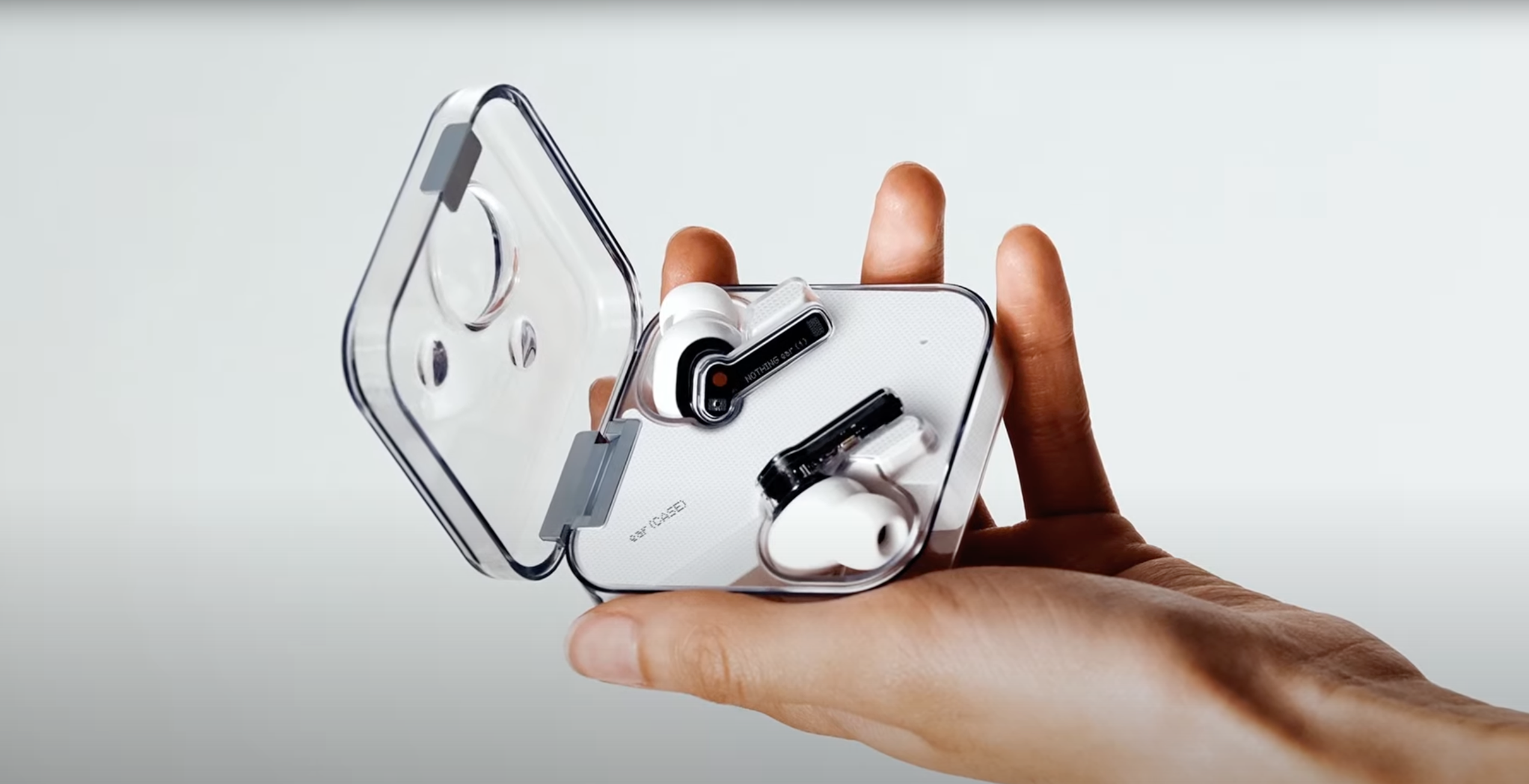


Interesting. I liked the Ming for sometime and felt tha they were a good phone, interestingly enough if they came to the Noth America they would be a very viable option for a lot of people.
WTF? Why should I want to choose between resistive and capacitive? =.=
@DG
Resistive+stylus is a must for Chinese input. While capacitive screen had proved much easier to use.
@3
I mean, capacitive is better than resistive in almost every aspect but Chinese character input.
@DG Really? Rofl. You’d want the option to choose if you ever wanted to/enjoyed using a Stylus.
@DG, Resistive is much better for a stylus, which is much better for drawing….like you do for Chinese characters. But capacitive is much better for…just about everything else. So for those people who have to write complicated characters, I’d say this is the best of both worlds…
The Ming line DID come to Verizon Wireless, but was not up to stuff, It looked cool, but reviewers didn’t enjoy it.
Found it! it’s called the Motorola Krave!
i still say it looks like a star trek communicator from TOS
Given the small display-size of most smartphones (4 inch diagonal), but their high resolution (better than 480×320), it is obvious that their information density (pix/cm^2) cannot be adressed by a thick finger-tip. Only the thin tip of a stylus (or of a ladie’s long finger-nail) can make good use of that information density. A typical example: cut-and-paste of text, starting and ending at a precise character. This is impossible for a finger-tip without a cumbersome zooming-aid, since it is unprecise and the finger occludes the view.
This means that capacitive touchscreens, which require an extended surface of the finger to be in contact with the screen to register a “touch”, are not at all appropriate for pocket-sized devices like smartphones when one tries to do more than just viewing information, but tries to actually edit the text/picture/etc. that is shown on the screen.
So far, only resistive touchscreens allow to work with a stylus or a finger-nail. For many users, this is really a more useful feature than being able to zoom with gestures (multi-touch feature of capacitive touchscreens). Zooming can be achieved in many other ways (for ex. by having a zoom-button, etc.). But nothing can replace pointing accuracy. Note that track-balls and other similar poiting-devices are no substitute for the ability to directly point to the screen with high accuracy.
Regarding the so popular “swiping” motion used to scroll the display, resistive screens are just as responsive as capacitive screens when one uses the tip of the finger so that the nail makes the contact (thereby requiring only minute amounts of pressure), rather than using the fleshy bit of the finger-tip (which does indeed require a lot of pressure on a resistive screen). It is really very easy to get used to hold the finger in such a way that the finger-nail makes the screen contact.
In any case, technology already exists that allows to combine the advantages of capacitive and resistive displays, see for ex.
http://www.stantum.com/ or
http://www.geek.com/articles/mobile/hitachi-develops-capacitive-touchscreen-compatible-with-stylus-input-20101118/
Unfortunately, this is being ignored in the newly released Android smartphones.
Stefan Fischer, University of Heidelberg (Germany).
PS: Looking forward to Steve Jobs introducing “iFood, the revolutionary way to eat with your fingers, instead of with fork&knive” ;-)